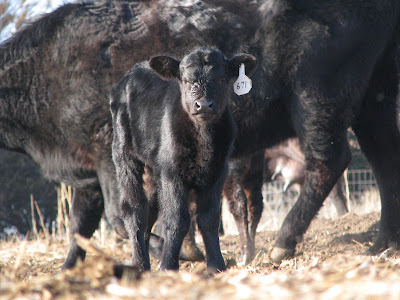At home on the range. This past weekend was a flurry of activity fixing fence and hauling cows and calves to pasture. Alissa and I, along with my parents, walked the fence surrounding the pasture checking for broken wires, missing staples on posts and rotted off posts to fix. The pasture is fairly rough with very steep hills as well as a creek running through it. This means that walking the fence took all morning and was a chore in itself.
 In the afternoon we went back and fixed the broken posts that were rotted off. The first step in the process is to remove the staples that attach the wires to each post. Then the bottom of the rotting post has to be dug out and removed. This is a crucial part, because if pieces of the wood post are left in the ground, it will prematurely rot the new post that is being put in. Once the hole is dug, the fun part begins.
In the afternoon we went back and fixed the broken posts that were rotted off. The first step in the process is to remove the staples that attach the wires to each post. Then the bottom of the rotting post has to be dug out and removed. This is a crucial part, because if pieces of the wood post are left in the ground, it will prematurely rot the new post that is being put in. Once the hole is dug, the fun part begins.
The new post is set in the same hole as the old post and "clean" dirt is thrown into the hole around the post. Now I know that dirt isn't "clean" but what I mean is that it is free of all organic material. This is an old tidbit that has been passed down through my family over the years. It is crucial that there is zero organic matter in the top 6 inches of soil because that is where a post will rot off and the organic matter will accelerate rotting on the new post.
The next step is my personal favorite. It is the dreaded "tamping" of the post. It is basically just pounding all air and empty space out of the soil around the post to ensure that it is buried securely. We typically throw more soil in the hole and tamp and re-tamp it down 3 or more times. We use a large water well pipe, which has a significant amount of weight giving any operator a good workout.
 Once the post is set, the wires are then re-stapled to the new post. Checking and fixing fence made for a very busy but productive Saturday. Now that the fence is fixed it, it is ready for cows to be put into the pasture for the summer. At home on the range.
Once the post is set, the wires are then re-stapled to the new post. Checking and fixing fence made for a very busy but productive Saturday. Now that the fence is fixed it, it is ready for cows to be put into the pasture for the summer. At home on the range.
-Colin




.JPG)





